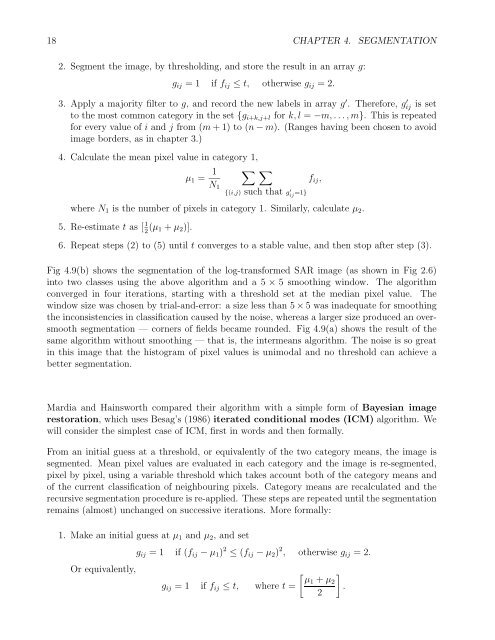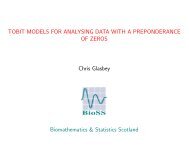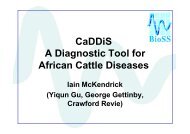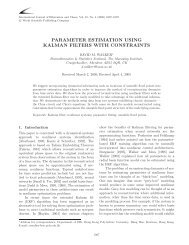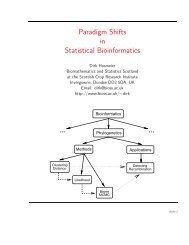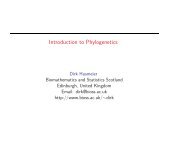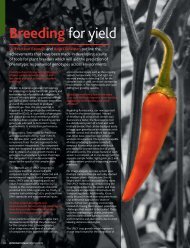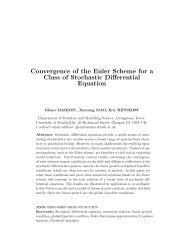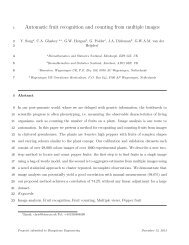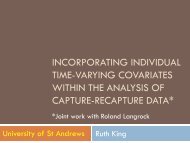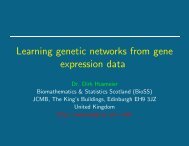Chapter 4 SEGMENTATION
Chapter 4 SEGMENTATION
Chapter 4 SEGMENTATION
Create successful ePaper yourself
Turn your PDF publications into a flip-book with our unique Google optimized e-Paper software.
18 CHAPTER 4. <strong>SEGMENTATION</strong>2. Segment the image, by thresholding, and store the result in an array g:g ij =1 iff ij ≤ t, otherwise g ij =2.3. Apply a majority filter to g, and record the new labels in array g ′ . Therefore, g ′ ij is setto the most common category in the set {g i+k,j+l for k, l = −m,...,m}. This is repeatedfor every value of i and j from (m +1)to(n − m). (Ranges having been chosen to avoidimage borders, as in chapter 3.)4. Calculate the mean pixel value in category 1,µ 1 = 1 N 1∑∑{(i,j) such that g ′ ij =1} f ij ,where N 1 is the number of pixels in category 1. Similarly, calculate µ 2 .5. Re-estimate t as [ 1 2 (µ 1 + µ 2 )].6. Repeat steps (2) to (5) until t converges to a stable value, and then stop after step (3).Fig 4.9(b) shows the segmentation of the log-transformed SAR image (as shown in Fig 2.6)into two classes using the above algorithm and a 5 × 5 smoothing window. The algorithmconverged in four iterations, starting with a threshold set at the median pixel value. Thewindow size was chosen by trial-and-error: a size less than 5 × 5 was inadequate for smoothingthe inconsistencies in classification caused by the noise, whereas a larger size produced an oversmoothsegmentation — corners of fields became rounded. Fig 4.9(a) shows the result of thesame algorithm without smoothing — that is, the intermeans algorithm. The noise is so greatin this image that the histogram of pixel values is unimodal and no threshold can achieve abetter segmentation.Mardia and Hainsworth compared their algorithm with a simple form of Bayesian imagerestoration, which uses Besag’s (1986) iterated conditional modes (ICM) algorithm. Wewill consider the simplest case of ICM, first in words and then formally.From an initial guess at a threshold, or equivalently of the two category means, the image issegmented. Mean pixel values are evaluated in each category and the image is re-segmented,pixel by pixel, using a variable threshold which takes account both of the category means andof the current classification of neighbouring pixels. Category means are recalculated and therecursive segmentation procedure is re-applied. These steps are repeated until the segmentationremains (almost) unchanged on successive iterations. More formally:1. Make an initial guess at µ 1 and µ 2 , and setOr equivalently,g ij = 1 if (f ij − µ 1 ) 2 ≤ (f ij − µ 2 ) 2 , otherwise g ij =2.[ ]µ1 + µ 2g ij =1 iff ij ≤ t, where t = .2


